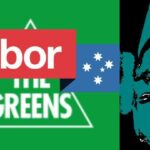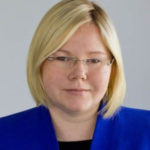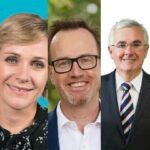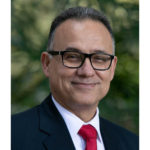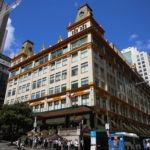“The Most Culturally Diverse Federal Election Ever”: Interview With Politics in Colour’s Kat Henaway
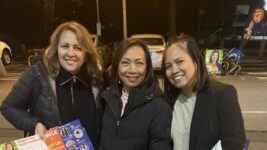
As Australians headed to the ballot box last Saturday, the BBC ran an article headlined, Why Is Australia’s Parliament so White?
The piece pointed out that despite our nation being one of the most multicultural in the world, 96 percent of lawmakers within the last federal parliament were white.
That the old white boys’ club runs the nation of Australia on a continent brutally stolen from First Nations peoples has long remained unquestioned.
Indeed, once established, the first laws federal parliament set about passing were those collectively referred to as the White Australia Policy.
But as the British article went to press, there was a distinct change occurring at polling booths across Australia, which wasn’t totally apparent until the results began rolling in, and that involved the rejection of the white major party duopoly from significant numbers of the constituency.
And while the BBC could just as easily run a similar headline post-2022 election, an on the ground shift has occurred, which translates as a calling for political representation beyond Anglocentric male domination, which has continued despite the changing makeup of our society.
A victory for community
The key example of this shift has been the election of Independent Dai Le to the southwestern Sydney seat of Fowler, which had been a Labor stronghold since it was created in 1984.
Fowler is one of the most multicultural, multifaith and socially disadvantaged electorates in the nation.
In October last year, Labor decided it was going to run one of its key members in the safe seat of Fowler for last weekend’s vote. This was Kristina Keneally, a wealthy white woman, who, at the time, was shadow home affairs minister and was living in Sydney’s affluent northern suburbs.
The Christian American-Australian woman had no connection whatsoever to the southwestern Sydney area, while Vietnamese lawyer and community worker Tu Le was already set to run for Labor in the seat, until now PM Anthony Albanese told the local to “hang in there” for another time.
And it was these circumstances that prompted Vietnamese woman Dai Le to run in Fowler. The local, who was the current Fairfield deputy mayor, has a clear understanding of community, and the electorate reflected this in its rejection of Labor and its star player as a potential representative.
Promoting greater diversity
Politics in Colour supported Dai Le in her campaign to provide Fowler with proper federal political representation. Established in 2020, the Indigenous company was set up to promote greater diversity in the Australian political arena.
A descendant of the Mer and Mua people of the Torres Strait, Politics in Colour chief executive Kat Henaway has been running workshops and webinars in the lead up to the 2022 election, which she underscores was the most diverse national vote this country has ever seen.
Sydney Criminal Lawyers spoke to Kat Henaway about why Australia’s parliaments continue to be the domain of white men, the shift that has occurred in this regard, and how the Candid Conversations her company hosts have been playing a key role in this political transformation.
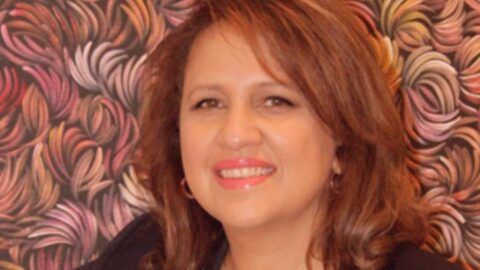
Looking at this election we’ve just had, Labor took it out, but one major defeat was Kristina Keneally losing the party’s former safe seat of Fowler in southwestern Sydney.
Independent Dai Le took out the seat. Your organisation had been supporting Le, a Vietnamese local, in her running for federal parliament.
Kat, can you talk about the significance of Le winning out over one of Labor’s key players in a seat that’s one of the most multicultural electorates in the country?
One of the reasons Dai chose to run was because it is such a strong multicultural electorate. She’s been a councillor in Fairfield for over 10 years. So, she knows the community well.
To see Labor helicopter Kristina Keneally in, when Tu Le had already been recommended as the appropriate candidate in 2021, and to have Labor dismiss that was a real afront not just to Fowler, but to the people of colour community.
It made the headlines. Democracy in Colour created a campaign around it, setting up an online petition, asking people to sign against Keneally being helicoptered in.
We are closely connected to Democracy in Colour, so we promoted it. There is another organisation called Women of Colour Australia, which also promoted it.
A couple of the organisations wrote media releases and opinion pieces on why they felt strongly that Labor had made a mistake, as it was unfair to choose a white woman who had no connection to the community.
Labor was just trying to save Keneally’s career because it was looking likely that she wouldn’t win the Senate seat for another term.
I’d heard from other organisations that Labor had run a poll, and its constituents wanted it. But I didn’t believe any of it.
If you listened to what people of colour communities were saying, they were clear that they want to be represented by people who look like them and have lived experience.
Tharini Rouwette from Allies in Colour contributed to an article. She said, “Labor will pay for this.”
At that time, she knew that Dai Le would run for the seat of Fowler. And once she announced that we promised to back her and help promote her campaign.
The Labor decision to have former senator Keneally, a wealthy white woman from Sydney’s affluent northern postcodes, run in the diverse less affluent electorate was always problematic.
And in some ways, it sums up the whole issue of the lack of diversity in Australian politics. Can you speak on that point?
It’s a clear example of the structural racism that all of our organisations are trying to dismantle in this country.
We are a very multicultural country, except it is an extremely racist one as well, and it has been for 230 years.
There is a movement across the world to authenticate diversity and inclusion. America is doing a great job of it. New Zealand is doing a fantastic job in its parliament. So, it’s time for Australia to take this seriously.
Labor didn’t read the room. They haven’t tapped into the zeitgeist, which is that the world is looking for more authentic representative leadership.
We want less of the white boys’ club, and more equal representation in leadership.
Looking at the overall outcome of the election, how would you say the results have highlighted this push to break from the disproportionate hold that white male leadership has had in this country?
The Guardian put out an article saying that only 8 percent of candidates in the federal election came from diverse backgrounds. That sounds like a bad story.
But you could actually spin it into a really positive story, because there were over 150 candidates of colour that were preselected to run in this federal election.
It was the most culturally diverse federal election we have ever seen. Never in the history of the Liberal Party have they preselected 26 candidates of colour.
This is the Liberal Party, the most conservative right-wing party, yet it preselected more candidates of colour to run in this election than Labor and the Greens.
There were about 150 candidates of colour preselected and about 44 of them were Indigenous.
We’ve never seen these sorts of statistics before.
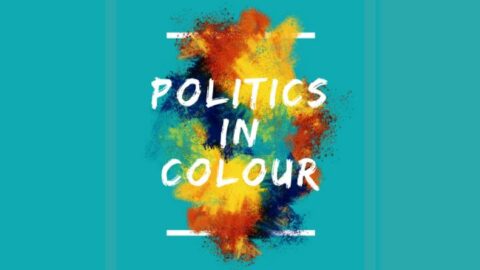
So, what’s been preventing this change from happening in the past?
What’s been preventing it is a lack of advocacy. People haven’t thought to challenge the political parties on cultural diversity.
Alongside that, there is what’s been happening in recent years regarding the reengineering of diversity and inclusion.
Diversity and inclusion has often been co-opted by Anglo Celtic white European people. If you look at diversity and inclusion committees and boards of corporations globally, most of the people sitting on those boards are Anglo Celtic white Europeans.
So, even the diversity space has not been authentic. It hasn’t been authentically represented.
But there has been a real shift with a convergence of social factors since 2008, which began with Obama being elected.
You had America’s first Black president. Then you had the #MeToo movement, which amplified the issues of women not being respected and heard. Then the Black Lives Matter movement came along a couple of years ago.
So, it was a convergence of a whole lot of social factors that have empowered communities to say what they really feel. And, of course, this has been backed by technology: online platforms and social media platforms.
Our voices are becoming louder. The people have a megaphone, and that’s social media.
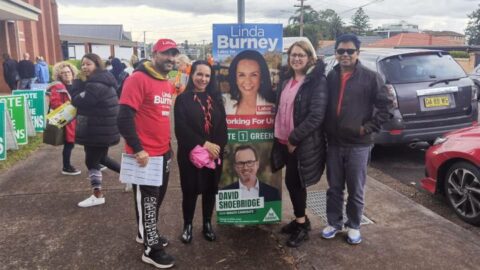
So, how does your organisation, Politics in Colour, set about trying to change these nonrepresentative political outcomes that have been continuing to occur, yet seem to be coming unstuck now?
We’ve been operational since the end of 2020, when we first launched. What we found was people were really keen to talk about cultural diversity in politics, the lack of it, and how hard it is for them.
Our first conversation was with Linda Burney, Mehreen Faruqi, Jenny Leong and Kaushaliya Vaghelamp. They were all MPs and Senators at the time.
They all wanted to talk about what it’s like to be a woman of colour in politics, and how important it is to break down the structural barriers that uphold this idea of white superiority in parliament. They were very vocal about it.
So, these are the country’s most senior female leaders – women of colour – openly speaking about the urgency of dismantling structural racism in politics.
They had all experienced incredible barriers in their journey in politics. And a lot of online abuse – racial abuse.
Mehreen Faruqi implemented an anti-racism policy with the Greens. And there have been a number of other measures that politicians have been able to implement around reducing this type of behaviour.
The magic of Politics in Colour is we give people a platform to speak openly and honestly about their experience.
We call it Candid Conversations because it’s a safe space for women of colour or people of colour to speak openly and tell the truth about how they feel and what it’s really like.
These politicians had never been asked before. They’d never been given a platform to say what it was like to be them in politics and the racism it involved. So, they got to unpack that in a safe space.
We create safe spaces, which means we invite people of colour to come into the space. So, we ensure that the webinar is secure. We don’t send the Zoom link out publicly. We only allow the Zoom link to go to people who have registered.
The space is secure. It’s safe. So, then we can open up and have honest conversations. And that’s been the magic, because every time we’ve run a Candid Conversation with Indigenous people or people of colour, they come into it and want to hear and speak the truth.
The audience wants to understand, because a lot of people are thinking of going into politics, but they’re concerned about the racism, sexism and discrimination. So, people want to hear how others handle it – how these people survive it.
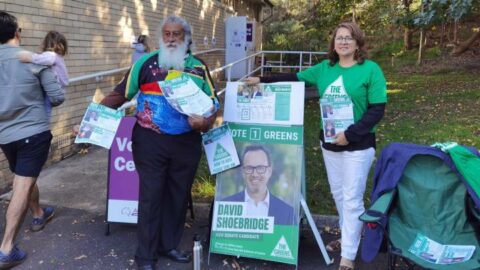
And lastly, Kat, there was a substantial number of Indigenous candidates in this recent election.
Wiradjuri woman Labor MP Linda Burney is now minister of Indigenous affairs. Gunnai Gunditjmara and Djab Wurrung woman Greens Senator Lidia Thorpe was voted back into office.
Indeed, eight First Nations candidates were voted into federal parliament. The majority were women. And that makes ten Indigenous federal parliamentarians in total for the next term.
In your opinion, what do you think about Saturday’s vote in terms of how it reflected on First Nations?
It has been exciting to watch the number of Indigenous people step into politics over the last couple of years.
We ran a couple of workshops last year for people of colour, teaching them in particular about local government because we had the NSW local government election.
I worked closely with Dominic WY Kanak, a Bondi councillor in Waverley. He’s a Torres Strait Islander guy. He’s been a councillor for 25 years. And Dom runs an Aboriginal councillors’ network in NSW.
After we had run a couple of workshops, and a couple of Candid Conversations, we knew a number of Indigenous people who were thinking about running in the NSW local government election, and we supported them to run.
After that election was over Dominic said he was grateful for the support, as we now have more than double the number of Indigenous councillors in NSW. So, it went from about nine to 20 plus.
Dominic said we’ve never had this many Indigenous people in our network, and that was after one year of campaigning, talking to Indigenous people, answering questions and advocacy.
So, for that small amount of work, we were able to influence that local government election to get more Indigenous people in. It was great to see.
A lot of Indigenous people have made their way to the top of organisations or corporations. They’re running their own businesses.
What we tell them is you have all the corporate leadership capabilities and it’s not that different in politics, so you should definitely consider it if you want to change this country.
Political leadership is the ultimate leadership. You are not going to get more impactful and influential in this country than as a politician.
What we unpack in our workshops is the process of parliament, and the fact that all of our laws are made there.
Those laws impact all of our lives. So, if Indigenous people want to see fairer legislation and policies that determine their lives and impact their communities, then they need to get into politics and have their voices heard when that legislation is being drafted.
That’s the only way that they’re going to have any influence on how this legislation impacts their community.
It’s not going to come through grassroots advocacy. We’ve been doing grassroots for 230 years and we haven’t impacted legislation.
I’d like to see more Aboriginal and Torres Strait Islander lawyers step into politics. We have a lot of really great people who are community organisers and businesspeople, but we’re not seeing large numbers of Indigenous lawyers stepping up yet.
My hope is we will see more of that. As I said, there were 44 Indigenous candidates in this election. We’ve never seen this many Indigenous candidates run for a federal election before.
It’s incredibly heartening. A lot of those candidates were in unwinnable seats. However, the fact that they’re stepping up will have an enormous impact in communities.
I get phone calls all the time from Indigenous people, saying that they’re thinking of running but don’t know how to do it. I say, “We’re running another workshop in three months. We’ll send you the details. So, come along and we’ll teach you.”
Leadership from people of colour in politics will change the culture in this country. It is the only way to reduce significant racism and divisiveness.
That is to put people of colour and Indigenous people in these top positions and watch how they behave differently to the white boys’ club.
You’ll notice they’re values are very different. They’ll have very different opinions. They’ll behave differently and that influence will be televised nationally.
That will influence this country to be more accepting and less racist. I strongly believe that.


